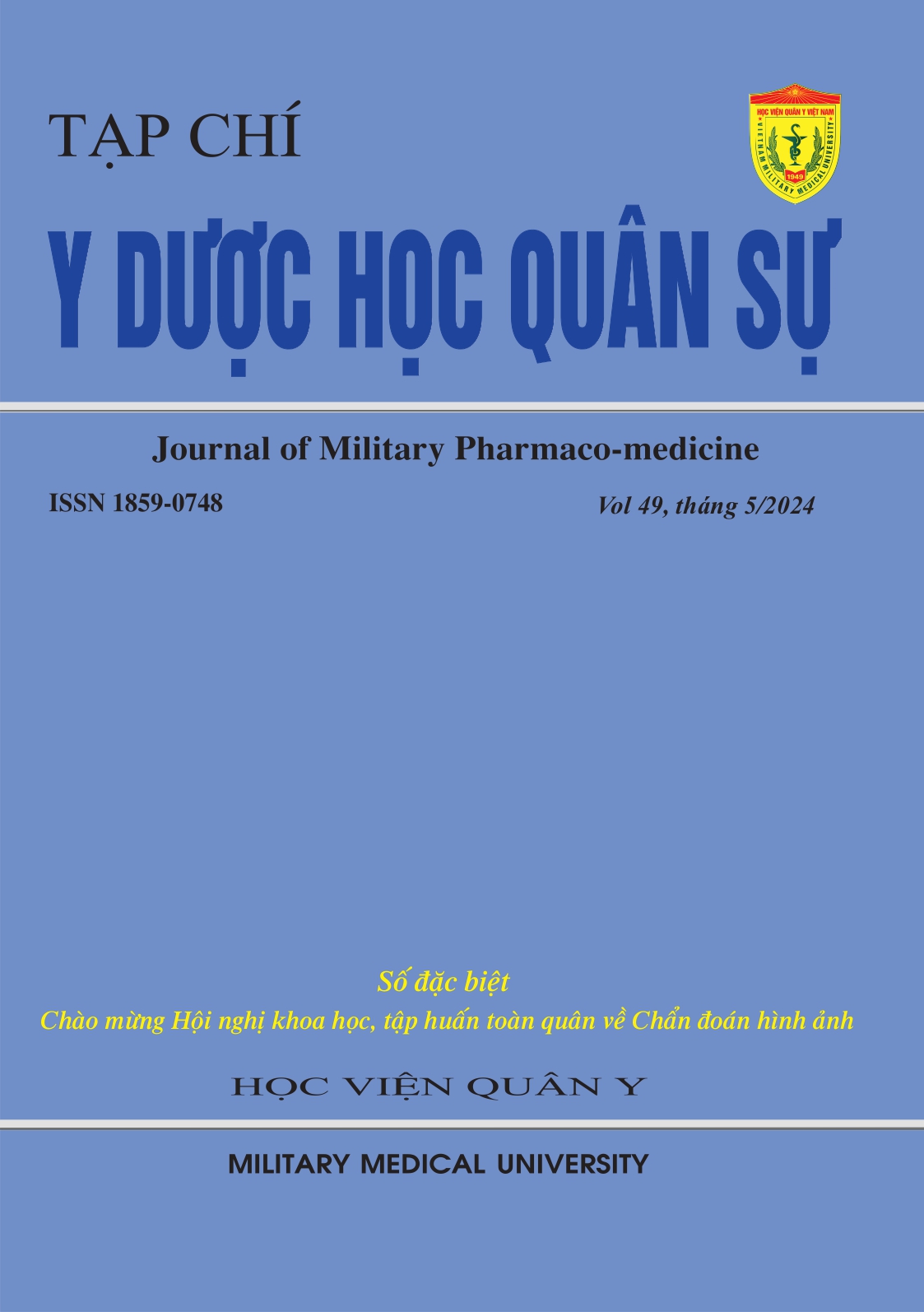NGHIÊN CỨU MỐI LIÊN QUAN GIỮA MỨC ĐỘ XƠ HOÁ GAN TRÊN SIÊU ÂM FIBROSCAN VỚI MỘT SỐ ĐẶC ĐIỂM LÂM SÀNG, CẬN LÂM SÀNG Ở BỆNH NHÂN ĐÁI THÁO ĐƯỜNG TÝP 2
Main Article Content
Abstract
Studying the relationship of Liver Stiffness Measurement on fibroscan with Clinic and paraclinic characteristics in patients with type 2 diabetes
Abstract:
- Objective: To investigate the relationship of Liver Stiffness Measurement on fibroscan with Clinic and paraclinic characteristics in patients with type 2 diabetes
- Subjects and methods: Cross-sectional and prospective description of 142 type 2 diabetes patients undergoing Fibroscan ultrasound at Military Hospital 103 from April 2023 to February 2024.
- Results: The Liver Stiffness Measurement (LSM) had no relationship with age, Gender, BMI, Blood pressure, HbA1c, Cholesterol, Triglyceride and AST, ALT index. The LSM in the increase blood Glucose patient group (6,8 ± 3,7 Kpa) increased higher than in the controlled blood Glucose patient group (5,1 ± 1,6 Kpa). LSM have a moderate positive correlation with blood glucose r = 0.27, p < 0.05.
- Conclusion: The Liver Stiffness Measurement on Fibroscan is related to blood glucose in patients with type 2 diabetes
- Keywords: Liver Stiffness Measurement, Fibroscan, Type 2 diabetes.
Article Details
Keywords
Liver Stiffness Measurement, type 2 diabetes
References
2. Mikolasevic Ivana, Orlic Lidija, Franjic Neven, et al. Transient elastography (FibroScan®) with controlled attenuation parameter in the assessment of liver steatosis and fibrosis in patients with nonalcoholic fatty liver disease - Where do we stand? World Journal of Gastroenterology. 2016; 22(32):7236.
3. Wong Vincent Wai-Sun, Vergniol Julien, Wong Grace Lai-Hung, et al. Diagnosis of fibrosis and cirrhosis using liver stiffness measurement in nonalcoholic fatty liver disease. Hepatology. 2010; 51(2):454-462.
4. Trần Thị Khánh Tường, Phạm Quang Thiên Phú. Mối tương quan giữa mức độ nhiễm mỡ gan và xơ hóa gan ở bệnh nhân đái tháo đường týp 2 bị bệnh gan nhiễm mỡ không do rượu. Tạp chí Y học Việt Nam. 2020; 488(1): 21-25.
5. Lomonaco Romina, Godinez Leiva Eddison, Bril Fernando, et al. Advanced liver fibrosis is common in patients with type 2 diabetes followed in the outpatient setting: The need for systematic screening. Diabetes Care. 2021; 44(2):399-406.
6. Kumar Nikhil A, Das Sidhartha. Fibroscan of Liver in type 2 diabetes mellitus and its correlation with risk factors. Journal of Diabetes Mellitus. 2019; 9(02):62-68.
7. Fabrellas Nuria, Hernandez Rosario, Graupera Isabel, et al. Prevalence of hepatic steatosis as assessed by controlled attenuation parameter (CAP) in subjects with metabolic risk factors in primary care. A population-based study. PloS one. 2018; 13(9):0200656.
8. Sporea Ioan, Mare Ruxandra, Popescu Alina, et al. Screening for liver fibrosis and steatosis in a large cohort of patients with type 2 diabetes using vibration controlled transient elastography and controlled attenuation parameter in a single-center real-life experience. Journal of Clinical Medicine. 2020; 9(4):1032.
9. Fernando Joseph Noel, Alba Rebecca Lim, Alba Willy. Factors associated with the severity of findings on hepatic transient elastography among persons with type 2 diabetes and fatty liver. Journal of the ASEAN Federation of Endocrine Societies. 2019; 34(2):134.


